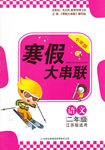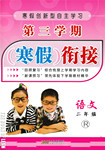题目内容
【题目】听下面一段较长对话,回答以下小题。
【1】What equipment did the speakers need?
A. The string.B. The compass.C. The ruler.
【2】What does the man say about the method they used to measure wave speed?
A. It was simple to carry out.B. It provided accurate results.
C. It required special equipment.
【3】What mistake did the man make when first drawing the map?
A. He chose the wrong scale.
B. He stood in the wrong place.
C. He did at the wrong time.
【4】What will the man do next with their map?
A. Scan it into the report.
B. Check it with photographs.
C. Download it from the Internet.
【答案】
【1】B
【2】A
【3】B
【4】B
【解析】
【原文】
M: I’ve brought my notes on our Biology Field Trip to Rocky Bay, Lisa, so we can work on our report on the research we did together.
W: OK. I’ve got mine too.
M: First, about the equipment. What did they tell us to bring a ruler for?
W: Oh, we didn't need it because we were measuring wind direction, and we’d brought the compass for that...
M: And this piece of string is also not necessary.
W: So let’s begin with how we measured wave speed. I was surprised how straightforward that was.
M: I' d expected us to have some sort of high-tech device, not just stand there and count the number of waves per minute. Not very precise, but I suppose it was good enough. Then we needed the map of the seashore. I had to do it while the tide was low; well that was OK, but the place I started it from was down on the beach, then I realized I should have gone up higher to get better visibility. So I had to start all over again. But at least I’d no problems drawing it all to scale.
W: It looks good. We could get a map of the region off the Internet and see if we need to make any changes.
M: I had a look but I couldn’t find anything. But you took some pictures, didn’t you?
W: Yeah. I’ll email you them.
M: OK. I'll make some corrections using those. Then I can scan it into our report.

 寒假大串联黄山书社系列答案
寒假大串联黄山书社系列答案 寒假创新型自主学习第三学期寒假衔接系列答案
寒假创新型自主学习第三学期寒假衔接系列答案【题目】阅读下列短文,并根据所读内容在文章后表格中的空格里填入一个最恰当的单词。
注意:请将答案写在答题卡上相应题号的横线上。每个空格只填1个单词。
Interviewing someone for a job is not as easy as it looks. First, as the interviewer, you’re tasked with finding the person who will not only do the job well but also fit in well with the other employees.
You have to make an evaluation of abstract qualities that can’t be found on a résumé. Because you have to repeat the process for every potential employee, you end up asking question after question, applicant after applicant.
Still, interviewers need to be told something: “What is your biggest weakness?” is not a good question. It just isn’t.
Now, job seekers have to understand that interviewers want to find some way to know what makes an applicant different from others. Asking questions that are seemingly impossible to answer is one way to see who can think creatively. Then what may be a proper way to respond to such a question?
Honesty, with a twist(新手法)
“‘What are your three strengths and three weaknesses?’ is a classic, but not too many people know how to answer this,” says Kenneth C. Wisnefski, founder and CEO of WebiMax, an online marketing company.
“As an interviewer, we want to hear strengths that describe initiative(主动性), motivation and dedication. The best way to respond is to include these qualities into specific ‘personal statements.’”
“Similarly, weaknesses should be positioned as a strength that can benefit the employer.”
“I like to hear applicants state an exaggerated strength, and put an interesting twist on it. An example of this is, ‘My initiative is so strong, that sometimes I take on too many projects at a time.’”
This answer leads with a strength that employers want — initiative — and still acknowledges that you’re not perfect.
Although you might consider this acknowledgement too honest, it works because it proves you’re being honest.
Honesty, with progress
When you consider what your weaknesses are, think about how you have attempted to overcome them. No one is perfect, so pretending that you are a perfectionist will come across as insincere.
Debra Davenport, author of “Career Shuffle,” believes citing(引用) examples are the best approach.
“My preferred response for this question is to tell the truth without damaging the applicant’s image.” Davenport explains.
“A better response might be, ‘I’ve had some challenges with work-life balance in the past and I realize that a life out of balance isn’t good for me, my family or my employer. I’ve taken the time to learn better time and project management, and I’m also committed to my overall wellness.’”
The answer adds some dimension to the question, and proves you’ve thought beyond the answer. You’ve actually changed your behavior to address the situation, even if you haven’t completely overcome the weakness.
Put yourself in the interviewer’s shoes
However you decide to answer, Debra Yergen, author of “Creating Job Security Resource Guide,” recommends job seekers imagine themselves sitting on the other side of the desk.
“If you were doing the hiring, what would you be looking for? What would be your motivation for asking certain questions? Who would you be trying to weed out? If you can empathize (共鸣) with the interviewer, you can better understand what they want and need, and then frame your qualifications to meet their needs for the position you seek.”
Once you consider what the goal of the question is and figure out what your honest answer is, you’ll be able to give the best possible answer to a tricky question.
Job Interviews | Details |
| ☆ Find the person both doing the job well and【1】along well with other employees. |
| ☆ Understand that the interviewers want to【4】between applicants and that asking a question seemingly impossible to answer is one way to see an applicant’s【5】. |
| ☆ With the goal of the question【10】into account and the honest answer in your mind, you will be able to give the best possible answer. |